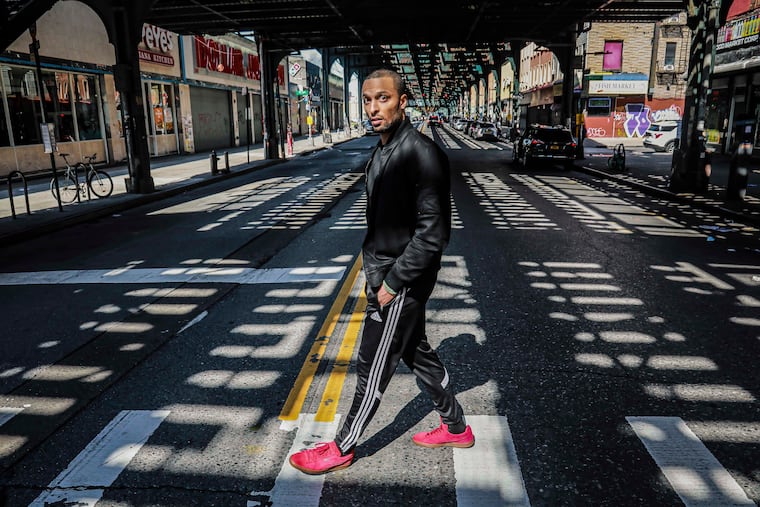Coronavirus, like past pandemics, shows how black bodies are political | Opinion
We're already seeing racial trends in coronavirus cases, including in Philly.

As a black queer HIV-positive person, I’ve seen my fair share of devastation caused by epidemics. So has Philadelphia. The deadliest was the 1793 outbreak of Yellow Fever, a mosquito-spread disease that slashed the city’s population by 10%. Not all Philadelphians were treated equally during this dramatic episode. As historian Rana Hogarth observes, Benjamin Rush, an eminent chair of medicine at the University of Pennsylvania, theorized that black people were naturally immune to yellow fever. Rush also believed that black skin resulted from leprosy, and encouraged attempts to “cure this disease of the skin in negroes,” according to student researchers at Penn. Yet since Rush was also a prominent abolitionist, many historians later forgot or forgave his racist medical beliefs.
Rush was not alone in seeing black people as less vulnerable to disease, according to Tim Holliday, a PhD candidate at Penn. Holliday told me historians have found that “white Philadelphians tended to downplay not only black vulnerability to yellow fever, but also the significance of black caregivers during the 1793 epidemic.” Some accused black caregivers of laziness and price-gouging when black nurses started charging higher rates — equal to pay for white caregivers — during this time.
Black Philadelphians eventually died at rates similar to the rest of the population. Washington Square, once called “Congo Square” by some black residents in a nod to their West African heritage, houses a mass grave of Philadelphians who lost their lives to the disease. Scholars estimate that over 4,000 — potentially closer to 5,000 — people died in the city.
When the AIDS epidemic hit Philadelphia, nearly two centuries later, it too devastated communities. Black Philadelphians made up nearly half of reported AIDS cases in 1985, causing the emergence of organizations like the black-led Bebashi to provide critical care for HIV-impacted Philadelphians. The delayed federal response to AIDS stemmed in part from a lack of investment in the health of the gay men the virus primarily impacted.
In other words, these pandemics exposed how treatment of the body is political — which has long been true in the U.S. Slavery reduced black people, and so black bodies, to a commodity and profitable end. The health and well-being of enslaved people — who were piled into ships like cargo, regularly lashed on plantations — was secondary to the capitalist aims of production. The dismissal of certain bodies as less valuable than others, especially for economic motivations, remains entrenched in the U.S. today. It comes at no surprise that during the COVID-19 pandemic, politicians have proposed that certain individuals get back to work at the risk of their safety, or suggested that older people should be willing to die to save the economy. Trading bodies for economic gain is tied to the nation’s founding on the system of slavery.
We see disparate valuing of bodies in everyday healthcare as well, not just during crises. Black women, for example, have the highest infant mortality rate in the country. James Sims, considered the father of modern gynecology, performed surgeries on enslaved black women without anesthesia nor their consent.
Today, we’re seeing racial disparities in coronavirus outbreaks. In places including Michigan, the Chicago area, and Milwaukee, black people are accounting for a much higher percentage of confirmed coronavirus cases than their share of the general population. New cases in Philly have been predominantly among African Americans.
Our coronavirus response can right some of these healthcare wrongs, by ensuring fair care access for all. A place to start: reopening Hahnemann Hospital. The city of Philadelphia was interested in reopening the building to help house coronavirus patients, but owner Joel Freedman demanded nearly $1 million in monthly payments. Although the City refused to use eminent domain to take over the hospital, claiming it would be too time-consuming and demanding, I agree with activists still calling for that step. Hahnemann served, and can still serve, the patients of color we know to be especially vulnerable to inadequate health care during pandemics. During the 2009 H1N1 (swine flu) pandemic, for example, “urban crowding, reliance on public transportation, absence of paid sick leaves, and language barriers” all made communities of color more susceptible to the virus, reports the Center for American Progress.
For many black and low-income Philadelphians who still have to leave home to work, fully quarantining is nearly impossible. If Mayor Jim Kenney and the rest of our local leadership fails to intervene for vulnerable communities in concrete ways, like expanding where patients can be cared for, their legacy will be agreeing that human costs of an epidemic are as Philly as the cheesesteak.
Abdul Aliy-Muhammad is an organizer and writer born and raised in West Philadelphia. @MxAbdulAliy